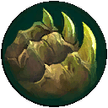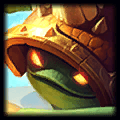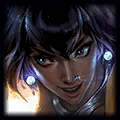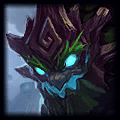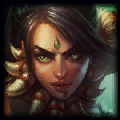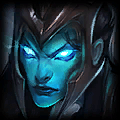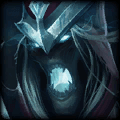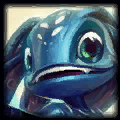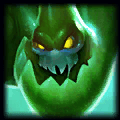

Gnar vs Séraphine

Comment Battre Séraphine en Tant que Gnar
basé sur 1 813 jeux avec Gnar contre SéraphineComment Nous Analysons les Counters de Champions LoL
Gnar vs Séraphine Résumé du Matchup
Meilleure Build pour les matchs avec Gnar vs Séraphine
Objets
Premiers articles


Objets suivants


Objets de base de Gnar



Articles facultatifs




Summoner Spells


Ordre de compétence



Runes
















Guide pour contrer Séraphine comme Gnar
Conseils pour jouer en tant que Gnar contre Séraphine.
Placez-vous près des murs et attirez vos ennemis pour les étourdir avec votre ultime.
Connaissez vos forces ! Mini Gnar est rapide, fragile et il inflige de gros dégâts soutenus. Méga Gnar est lent, résistant et il a un gros burst.
La gestion de votre Rage est très importante. Effectuez vos transformations aux bons moments pour profiter au maximum de vos deux formes.
Gnar vs Séraphine Statistiques du match
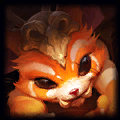

Comment Contrer Séraphine avec Gnar dans LoL
The stats shown on this page underscore some influential Gnar vs. Séraphine counter statistics that may help you realize the differences and similarities between these two champs. For instance, Gnar’s KDA ratio ([kills + assists] / deaths) of NaN is more than Séraphine’s KDA ratio of NaN, showing that Gnar may be more central to his team's team fighting effectiveness than Séraphine..
Gnar typically has a slightly larger longest kill spree than his matchup does. Typically, he takes more damage than Séraphine. This is usually reflective of different amounts of tankyness, but it can also illustrate that the one champ has less mobility and thus is not able to flee from further damage when poked or engaged.
championDifferences.title
Comparaison des types de dommages
championDifferences.playStyle.title
championDifferences.whoIsBetter
Both League of Legends champions are great champions. Both champs have their strengths, weaknesses, and counters. In the game's current meta, Gnar usually fairs equally well when trying to fight Séraphine, with a 49.3% win rate. Therefore, Gnar makes an ok counter to Séraphine.
While Gnar does have a lower win rate compared to Séraphine, when they face off with one another, Gnar also has a much greater level of difficulty that makes him a more time consuming champion to learn and master. You should be careful when picking Gnar into Séraphineas his relative depth means you may not be able to unleash his full potential without a lot of practice beforehand.
Moreover, Gnar also has some amount of CC and other utility, a similar amount to Séraphine. This often makes her just as valuable during teamfights, especially when fighting champions with a lot of burst damage.
While there is not one best champion for every situation in League of Legends, in Gnar vs Séraphine matchups, Séraphine is the better champ with a similar win rate, more champion depth, and a similar amount of utility to help out your allies during late stage team fights.
Gnar is a somewhat poor counter to Séraphine. You will do well by focussing your gameplay on increasing your CS and taking out objectives. If you can do that, you should do very well as Gnar against Séraphine.
Autres appariements de champions contre Gnar
Les meilleures Paires par Poste
additionalInformation.title
method.title2
additionalInformation.resources
additionalInformation.readMore
To learn all of the intricacies of Gnar in order to counter Séraphine during both the early game and mid / late game phases of League of Legends, you should continue reading to gather a few extra lessons on this matchup. If you pay attention to the build and stats shown here, you will grow your win rate significantly and be that much closer to League of Legends pro players.
Gnar often gets more CS compared to Séraphine. Champions who on average don't take much CS typically don't need much CS to be effective, such as sup champs. These kinds of champions are capable of scaling properly off of their skills, stats, and first items alone. Yet, champs with a lot of CS, such as hyper-carries, often need many items to be effective. In either case, try to exceed the numbers shown here to do well.
The most crucial items to prioritize in your Gnar versus Séraphine build consist of Couperet noir, Force de la trinité, and Estropieur. When Gnar bought at least these three items in his build, he performed a lot better versus Séraphine than with most other common builds. In fact, Gnar boasted an average winrate of 49.3% when playing against Séraphine with these items in his kit.
To have the best likelihood of beating Séraphine as Gnar, Gnar players should use the Jeu de jambes, Triomphe, Légende : alacrité, Baroud d'honneur, Plaque d'os, and Surcroissance runes from the Précision and Volonté rune sets. Of all the rune sets players used for Gnar vs Séraphine clashes, this order of runes yielded the highest win rate. Moreover, these runes averaged a 49.3% win rate overall.
By default, tips, statistics, and builds on how to beat Séraphine as Gnar are given for all skill levels combined. If you want to narrow the statistics and builds to a distinct rank, you can use the selection menu earlier in the counter matchup guide.





















